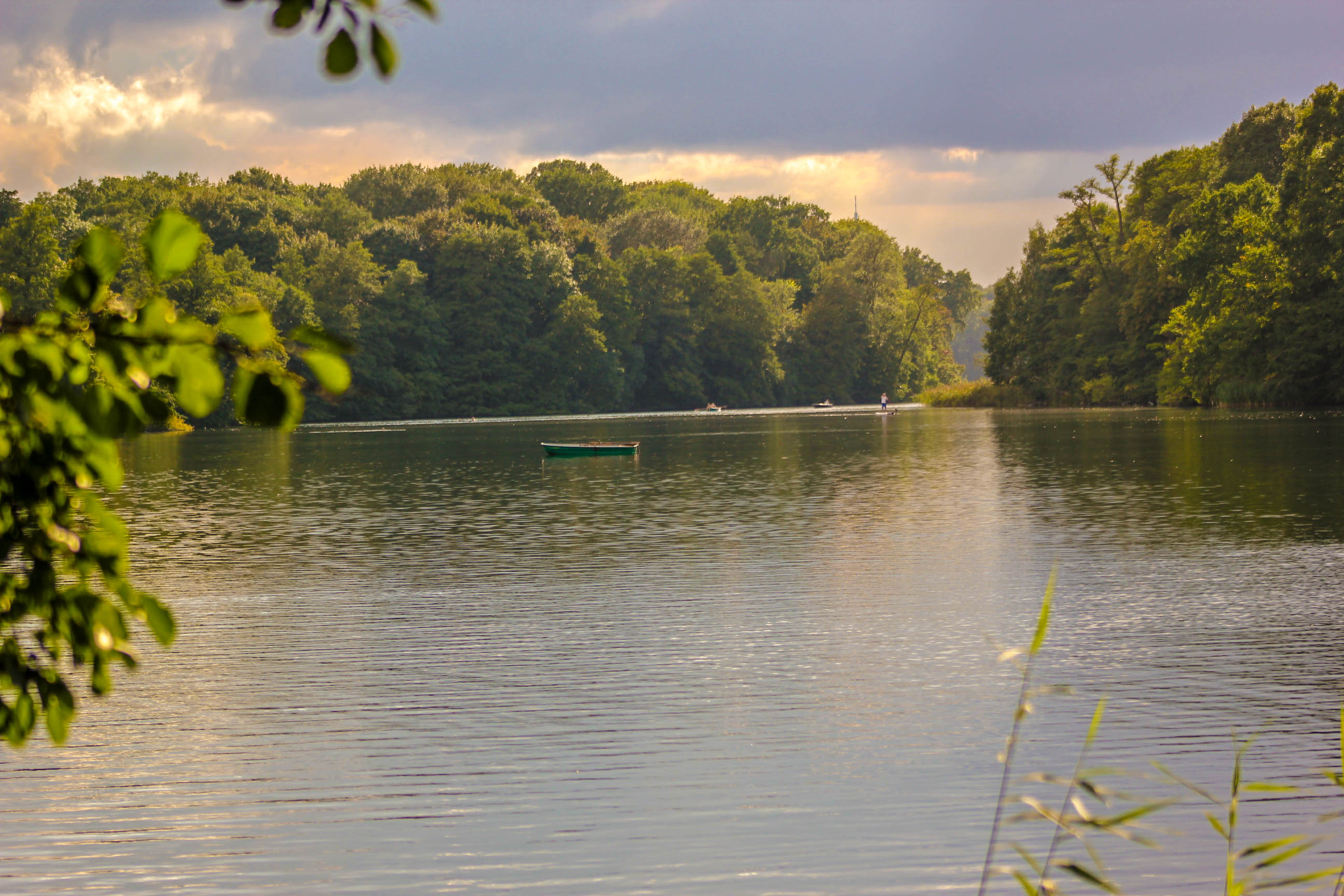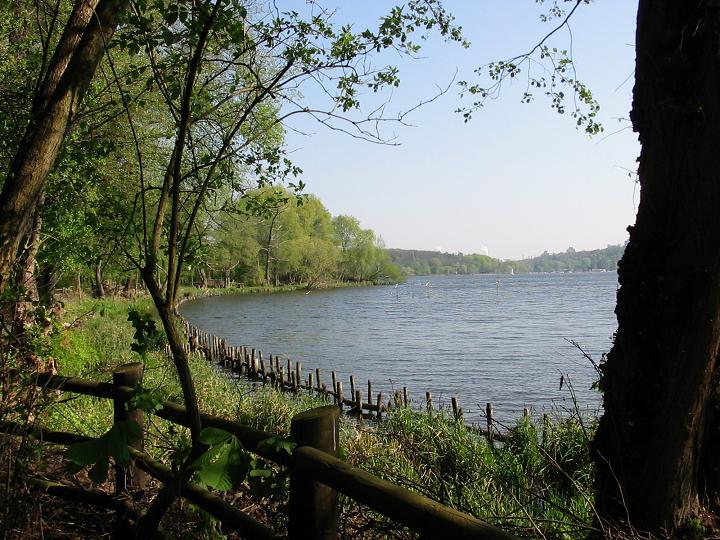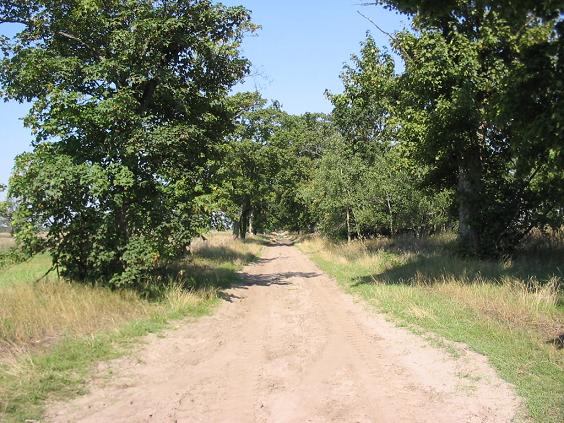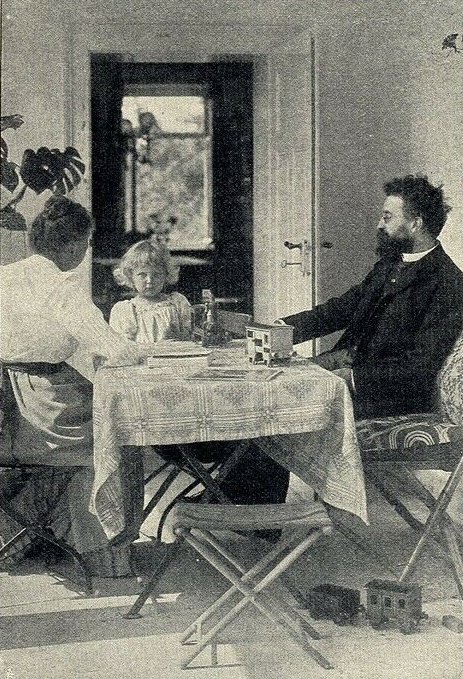|
Schlachtensee
Schlachtensee () is a lake in the south west of Berlin, in the Steglitz-Zehlendorf borough (in the quarters of Schlachtensee), on the edge of the Grunewald forest. The lake lends its name to the surrounding area and to the nearby ''Studentendorf Schlachtensee'', a student residence. The area has been part of Berlin since 1920. Geography and Paul-Ernst Park Schlachtensee is the most southerly in the Grunewald chain of lakes, which belongs geologically to the Teltow plateau Teltow [] is both a geological plateau and also a historical region in the German states of Brandenburg and Berlin. As an historical region, the Teltow was one of the eight territories out of which the March of Brandenburg was formed in the 12th an ..., and was emerged some 15,000 years ago from the ice age as a glacial trough. With a surface area of around , a circumference of and a maximum depth of , it is one of the larger lakes in Berlin. The lake is popularly used for walking and for swimming, due to t ... [...More Info...] [...Related Items...] OR: [Wikipedia] [Google] [Baidu] |
Schlachtensee Student Village
The Studentendorf (student village) Schlachtensee is a heritage listed building complex of residential and community buildings in Berlin. It was built in the 1950s and was planned as a residence for students of the Free University of Berlin. Based on the model of the Studentendorf Schlachtensee, the Studentendorf Adlershof opened in October 2014 on the campus of Humboldt University in Berlin's Adlershof district. Location The Studentendorf Schlachtensee is located in the southwest of Berlin, in Steglitz-Zehlendorf, in the neighbourhood of ikolassee The heritage listed part of the student village was built between 1959 and 1964, and financed by a donation from the Government of the United States of America. The Student Village Schlachtensee was the first newly built academic residential complex of post-war Berlin. History The Studentendorf Schlachtensee is one of the most important architectural contributions of the Americans to the re-education of the Germans after losi ... [...More Info...] [...Related Items...] OR: [Wikipedia] [Google] [Baidu] |
Schlachtensee (locality)
Schlachtensee is a locality within the borough of Steglitz-Zehlendorf in Berlin. It was formed as a new administrative district in 2020, combining parts of the Nikolassee and Zehlendorf localities. History In the Middle Ages, the village of Slatdorp existed on the southern shore of Schlachtensee, but it fell desolate after 1300. The first buildings of modern times were the Old Fishing Lodge, built in 1759 on the northwestern shore of Schlachtensee, and the New Fishing Lodge, built in 1853 on the southern shore. Otherwise, the present district consisted of unsettled forest and farmland until well into the 19th century. In the late 19th century, a small train station on the Wannsee railway line was built south of Schlachtensee lake. A private development company bought the land south of the station and incorporated it into Zehlendorf. Under the name "Landhausgemeinde Schlachtensee", small country houses, containing around 3 to 4 rooms each, were built for the (lower) middl ... [...More Info...] [...Related Items...] OR: [Wikipedia] [Google] [Baidu] |
Schlachtensee Berlin
Schlachtensee () is a lake in the south west of Berlin, in the Steglitz-Zehlendorf borough (in the quarters of Schlachtensee), on the edge of the Grunewald forest. The lake lends its name to the surrounding area and to the nearby ''Studentendorf Schlachtensee'', a student residence. The area has been part of Berlin since 1920. Geography and Paul-Ernst Park Schlachtensee is the most southerly in the Grunewald chain of lakes, which belongs geologically to the Teltow plateau, and was emerged some 15,000 years ago from the ice age as a glacial trough. With a surface area of around , a circumference of and a maximum depth of , it is one of the larger lakes in Berlin. The lake is popularly used for walking and for swimming, due to the good quality of the water. The Paul-Ernst Park is located next to the S-Bahnhof Schlachtensee Schlachtensee () is a lake in the south west of Berlin, in the Steglitz-Zehlendorf borough (in the quarters of Schlachtensee), on the edge of the Gru ... [...More Info...] [...Related Items...] OR: [Wikipedia] [Google] [Baidu] |
Berlin-Schlachtensee Railway Station
Berlin-Schlachtensee (in German Bahnhof Berlin-Schlachtensee) is a railway station in the ''Schlachtensee'' quarter in the district Steglitz-Zehlendorf of Berlin, Germany. It is served by the Berlin S-Bahn. The station is south of the lake Schlachtensee Schlachtensee () is a lake in the south west of Berlin, in the Steglitz-Zehlendorf borough (in the quarters of Schlachtensee), on the edge of the Grunewald forest. The lake lends its name to the surrounding area and to the nearby ''Studentend ... and was opened in 1874. The service was temporarily suspended because of the low use because of the S-Bahn-Boykott during the Cold War, to demonstrate against the GDR who also operated the S-Bahn in the west of berlin, despite the wall. In 1970, the tracks were dismantled. It was not until 1985 that operations could be resumed. References External linksStation information Railway stations in Berlin Berlin S-Bahn stations Buildings and structures in Steglitz-Zehlendorf ... [...More Info...] [...Related Items...] OR: [Wikipedia] [Google] [Baidu] |
Steglitz-Zehlendorf
Steglitz-Zehlendorf () is the sixth borough of Berlin, formed in Berlin's 2001 administrative reform by merging the former boroughs of Steglitz and Zehlendorf. Home to Free University of Berlin, the Berlin Botanical Garden, and a variety of museums and art collections, Steglitz-Zehlendorf is an important hub for research, science and culture in Berlin. It is known to be the wealthiest borough of Berlin, having the city's highest median household income. History The first mention of a present-day locality in the district by name was Lankwitz (Lancewitz) in 1239. It is assumed that Slavic and German settlements were established at the Schlachtensee and Krume Lanke lakes after 1200 at the latest. The first documented mention of Zehlendorf (then Cedelendorp) dates back to 1242. Here the Lehnin Abbey bought the settlement and kept it until 1542. Frederick the Great donated a church to the village in 1768 during a stopover on the journey from the Berlin Palace to the Sanssouci P ... [...More Info...] [...Related Items...] OR: [Wikipedia] [Google] [Baidu] |
Grunewald (forest)
Grunewald () is a German forest located in the western side of Berlin on the east side of the Havel, mainly in the Grunewald locality. At it is the largest green area in the city of Berlin. Geography The forest occupies, on the western side, 3/4 of the Grunewald locality, a small portion of the southern part of Westend (both in the Charlottenburg-Wilmersdorf borough); a great part of Nikolassee, the northern side of Zehlendorf and the northwestern part of Dahlem (all 3 in the Steglitz-Zehlendorf borough). It is close to the border of the neighborhood of Wannsee and its lake, and is near the Düppel forest. It is divided by the Havel river from the localities of Kladow, Gatow and Wilhelmstadt (all in the Spandau borough). It also borders the locality of Schmargendorf. There are twenty three islets located by the Havel ( Lindwerder and Schwanenwerder) and a small peninsula ( Schildhorn); and the tallest point is the hill of Teufelsberg, which is above sea level. On the ... [...More Info...] [...Related Items...] OR: [Wikipedia] [Google] [Baidu] |
Teltow Plateau
Teltow [] is both a geological plateau and also a historical region in the German states of Brandenburg and Berlin. As an historical region, the Teltow was one of the eight territories out of which the March of Brandenburg was formed in the 12th and 13th centuries. As a result of the (1239–1245) the question of territorial lordship of the newly created heart of the expanding march was finally decided here. Between 1835 and 1952 there was also a county, ; in addition a town immediately south of Berlin, in the present-day county of Potsdam-Mittelmark, bears the name Teltow. Geography and geology Boundary The Teltow is not a unified region, either from a historical or a landscape perspective. The present-day term is defined by an ice age plateau that consists mainly of ground moraine elements. Its natural northern border is defined by the range of the Tempelhofer Berge, among them the Kreuzberg rising to , along the southern bank of the Spree. To the east the borders are for ... [...More Info...] [...Related Items...] OR: [Wikipedia] [Google] [Baidu] |
Berlin S-Bahn
The Berlin S-Bahn () is a rapid transit railway system in and around Berlin, the capital city of Germany. It has been in operation under this name since December 1930, having been previously called the special tariff area ''Berliner Stadt-, Ring- und Vorortbahnen'' (Berlin city, orbital, and suburban railways). It complements the Berlin U-Bahn and is the link to many outer-Berlin areas, such as Berlin Brandenburg Airport. As such, the Berlin S-Bahn blends elements of a commuter rail service and a rapid transit system. In its first decades of operation, the trains were steam-drawn; even after the electrification of large parts of the network, a number of lines remained under steam. Today, the term ''S-Bahn'' is used in Berlin only for those lines and trains with third-rail electrical power transmission and the special Berlin S-Bahn loading gauge. The third unique technical feature of the Berlin S-Bahn, the , is being phased out and replaced by a communications-based train control ... [...More Info...] [...Related Items...] OR: [Wikipedia] [Google] [Baidu] |
Berlin
Berlin ( , ) is the capital and largest city of Germany by both area and population. Its 3.7 million inhabitants make it the European Union's most populous city, according to population within city limits. One of Germany's sixteen constituent states, Berlin is surrounded by the State of Brandenburg and contiguous with Potsdam, Brandenburg's capital. Berlin's urban area, which has a population of around 4.5 million, is the second most populous urban area in Germany after the Ruhr. The Berlin-Brandenburg capital region has around 6.2 million inhabitants and is Germany's third-largest metropolitan region after the Rhine-Ruhr and Rhine-Main regions. Berlin straddles the banks of the Spree, which flows into the Havel (a tributary of the Elbe) in the western borough of Spandau. Among the city's main topographical features are the many lakes in the western and southeastern boroughs formed by the Spree, Havel and Dahme, the largest of which is Lake Müggelsee. Due to its l ... [...More Info...] [...Related Items...] OR: [Wikipedia] [Google] [Baidu] |
Germany
Germany,, officially the Federal Republic of Germany, is a country in Central Europe. It is the second most populous country in Europe after Russia, and the most populous member state of the European Union. Germany is situated between the Baltic and North seas to the north, and the Alps to the south; it covers an area of , with a population of almost 84 million within its 16 constituent states. Germany borders Denmark to the north, Poland and the Czech Republic to the east, Austria and Switzerland to the south, and France, Luxembourg, Belgium, and the Netherlands to the west. The nation's capital and most populous city is Berlin and its financial centre is Frankfurt; the largest urban area is the Ruhr. Various Germanic tribes have inhabited the northern parts of modern Germany since classical antiquity. A region named Germania was documented before AD 100. In 962, the Kingdom of Germany formed the bulk of the Holy Roman Empire. During the 16th ce ... [...More Info...] [...Related Items...] OR: [Wikipedia] [Google] [Baidu] |
Karl Friedrich Paul Ernst
(Karl Friedrich) Paul Ernst (7 March 1866, Elbingerode, Kingdom of Hanover – 13 May 1933, aged 67) was a German writer, dramatist, critic and journalist A journalist is an individual that collects/gathers information in form of text, audio, or pictures, processes them into a news-worthy form, and disseminates it to the public. The act or process mainly done by the journalist is called journalis .... Works Novels *''Der schmale Weg zum Glück'' *''Das Glück von Lautenthal'' *''Der Schatz im Morgenbrotstal'' *''Saat auf Hoffnung'' Novellas and stories *''Der Tod des Cosimo'' *''Komödianten- und Spitzbubengeschichten'' *''Die Hochzeit'' Drama *''Demetrios'' *''Ariadne auf Naxos'' *''Canossa'' *''Brunhild'' *''Zwei Weiber'' *''Would-be Hamlet'' *''Der Erbe'' *''Die Verlobung'' *''Das Kind der Polizei'' *''Des Adels Stolz'' *''Die Äbtissin von Jouarre'' *''Der Sterbende'' Essays *''Der Weg zur Form'' *''Zusammenbruch des Idealismus''(1918), (1931) *''Zusammenbruch des ... [...More Info...] [...Related Items...] OR: [Wikipedia] [Google] [Baidu] |
Lakes Of Berlin
A lake is an area filled with water, localized in a basin, surrounded by land, and distinct from any river or other outlet that serves to feed or drain the lake. Lakes lie on land and are not part of the ocean, although, like the much larger oceans, they do form part of the Earth's water cycle. Lakes are distinct from lagoons, which are generally coastal parts of the ocean. Lakes are typically larger and deeper than ponds, which also lie on land, though there are no official or scientific definitions. Lakes can be contrasted with rivers or streams, which usually flow in a channel on land. Most lakes are fed and drained by rivers and streams. Natural lakes are generally found in mountainous areas, rift zones, and areas with ongoing glaciation. Other lakes are found in endorheic basins or along the courses of mature rivers, where a river channel has widened into a basin. Some parts of the world have many lakes formed by the chaotic drainage patterns left over from the last ice ... [...More Info...] [...Related Items...] OR: [Wikipedia] [Google] [Baidu] |







